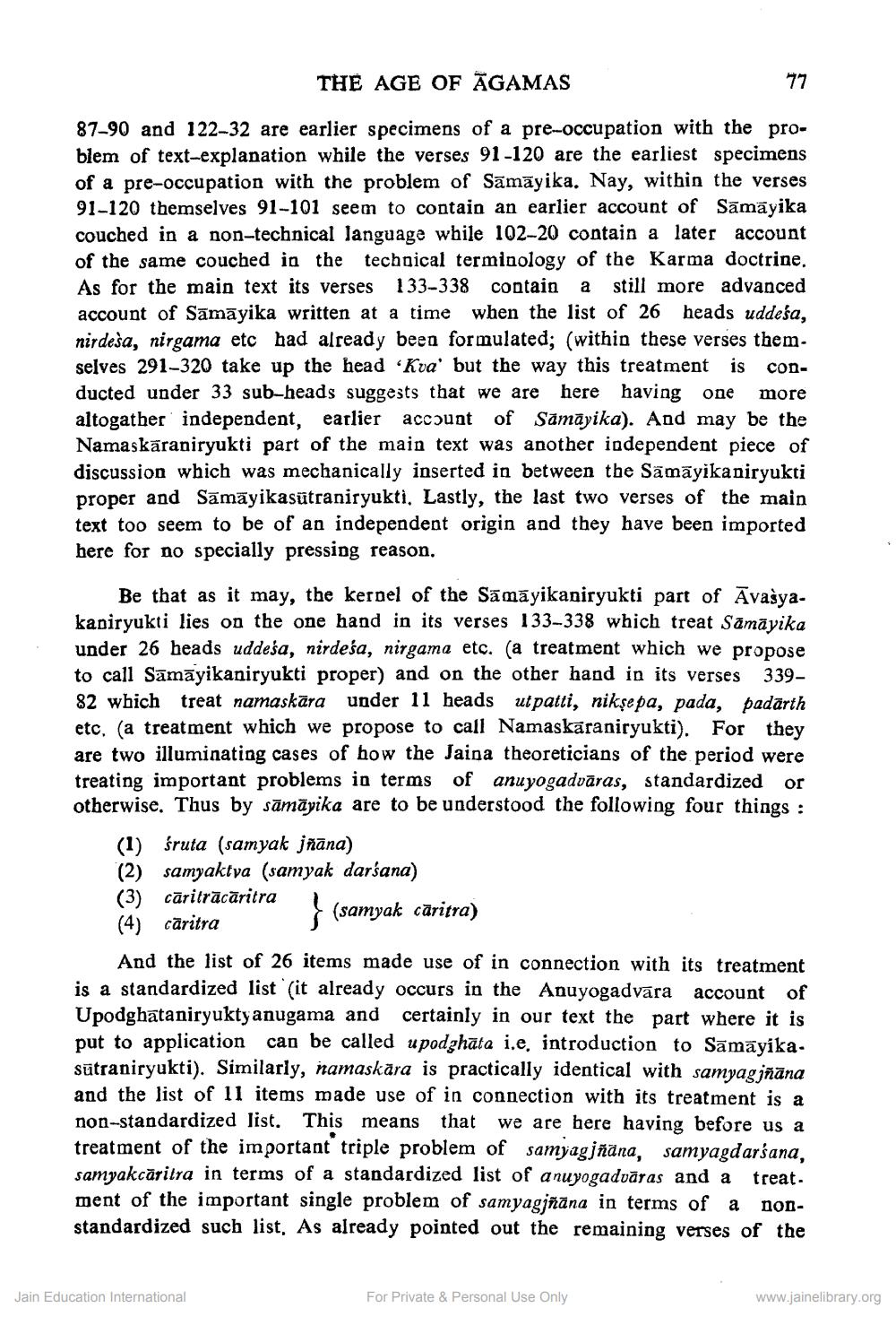________________
THE AGE OF ĀGAMAS
77
87-90 and 122-32 are earlier specimens of a pre-occupation with the problem of text-explanation while the verses 91-120 are the earliest specimens of a pre-occupation with the problem of Sāmāyika. Nay, within the verses 91-120 themselves 91-101 seem to contain an earlier account of Sāmāyika couched in a non-technical language while 102-20 contain a later account of the same couched in the technical terminology of the Karma doctrine. As for the main text its verses 133-338 contain a still more advanced account of Sāmāyika written at a time when the list of 26 heads uddesa, nirdesa, nirgama etc had already been formulated; (within these verses them. selves 291-320 take up the head 'Kva' but the way this treatment is con. ducted under 33 sub-heads suggests that we are here having one more altogather independent, earlier account of Sāmāyika). And may be the Namaskaraniryukti part of the main text was another independent piece of discussion which was mechanically inserted in between the Sāmāyikaniryukti proper and Sāmāyikasūtraniryukti. Lastly, the last two verses of the main text too seem to be of an independent origin and they have been imported here for no specially pressing reason.
Be that as it may, the kernel of the Sāmāyikaniryukti part of Āvašya. kapiryukti lies on the one hand in its verses 133-338 which treat Sāmāyika under 26 heads uddeśa, nirdesa, nirgama etc. (a treatment which we propose to call Sāmāyikaniryukti proper) and on the other hand in its verses 33982 which treat namaskāra under 11 heads utpatti, niksepa, pada, padārth etc. (a treatment which we propose to call Namaskaraniryukti). For they are two illuminating cases of how the Jaina theoreticians of the period were treating important problems in terms of anuyogadvāras, standardized or otherwise. Thus by sāmāyika are to be understood the following four things :
(1) śruta (samyak jñāna) (2) samyaktya (samyak darśana) (3) caritrācāritra
}(samyak cāritra) (4) caritra
And the list of 26 items made use of in connection with its treatment is a standardized list it already occurs in the Anuyogadvāra account of Upodghataniryuktyanugama and certainly in our text the part where it is put to application can be called upodzhāta i.e. introduction to Sāmāyika. sutraniryukti). Similarly, namaskāra is practically identical with samyagjñāna and the list of 11 items made use of in connection with its treatment is a non-standardized list. This means that we are here having before us a treatment of the important triple problem of samyagjñana, samyagdarsana, samyakcăritra in terms of a standardized list of anuyogadvāras and a treat. ment of the important single problem of samyagjñāna in terms of a nonstandardized such list. As already pointed out the remaining verses of the
Jain Education International
For Private & Personal Use Only
www.jainelibrary.org




